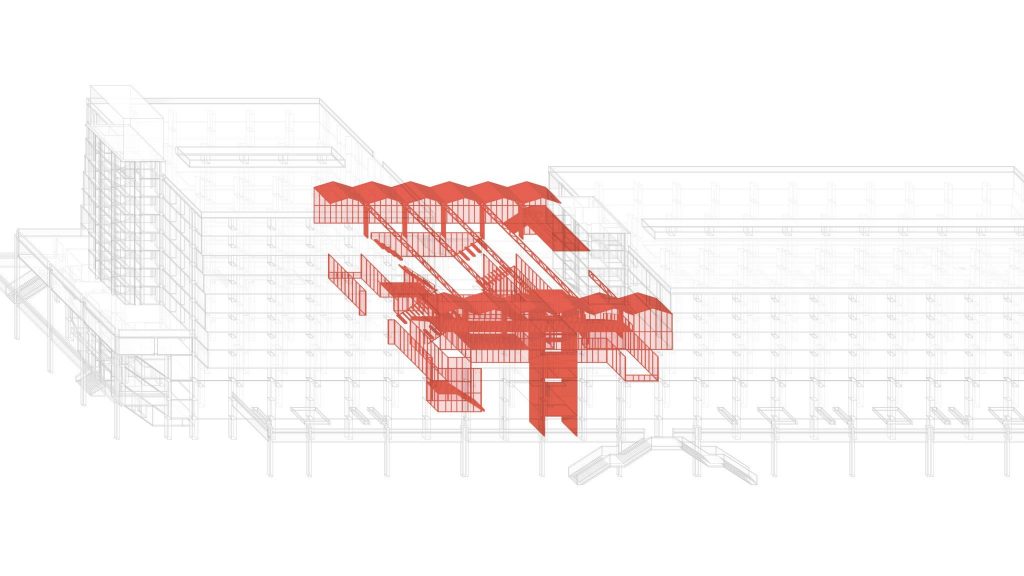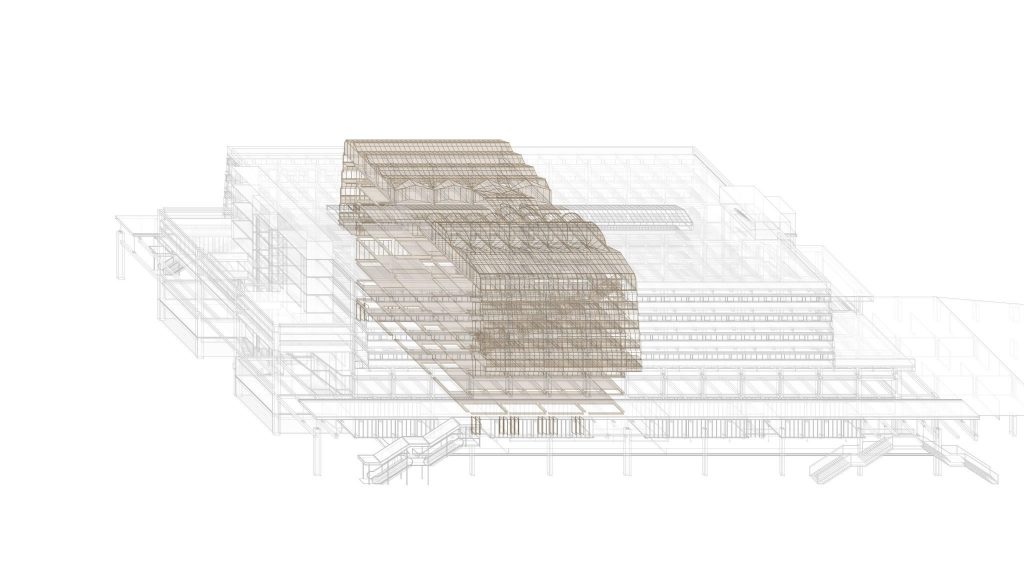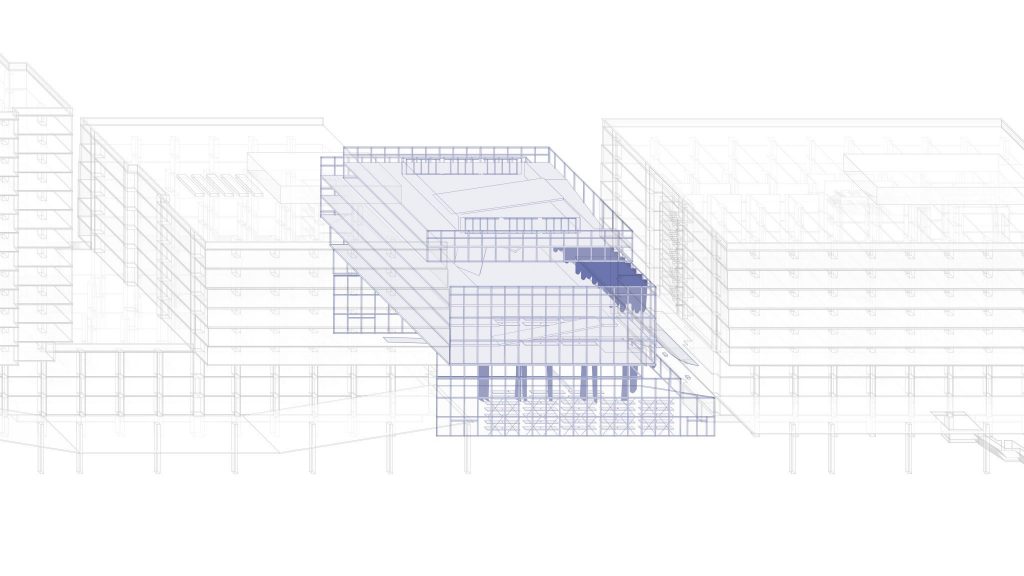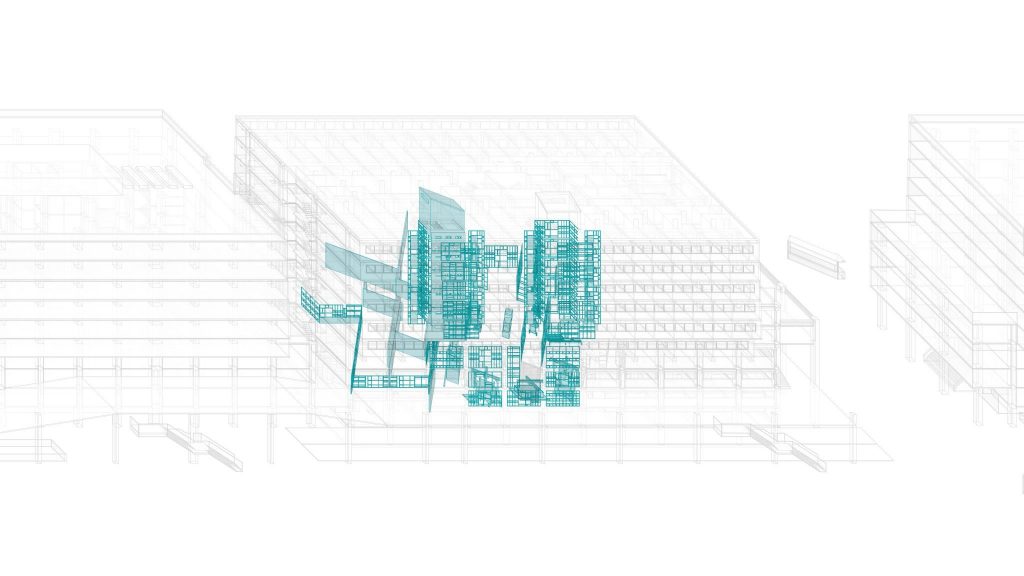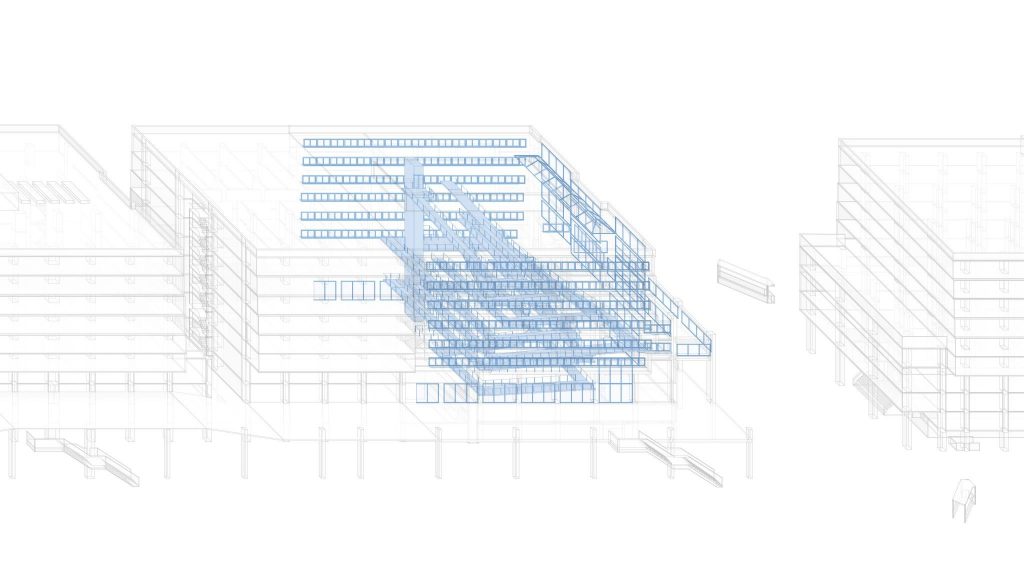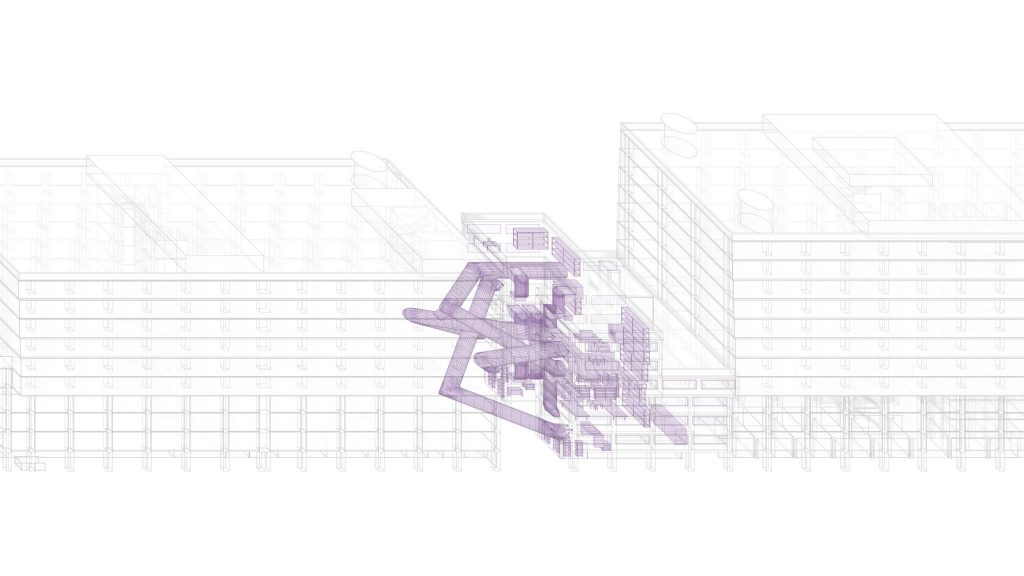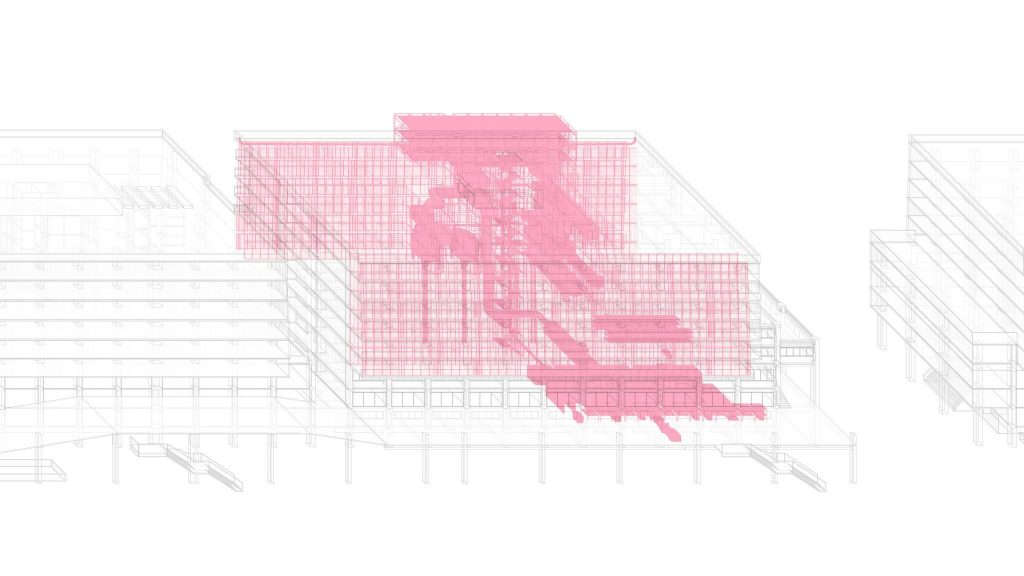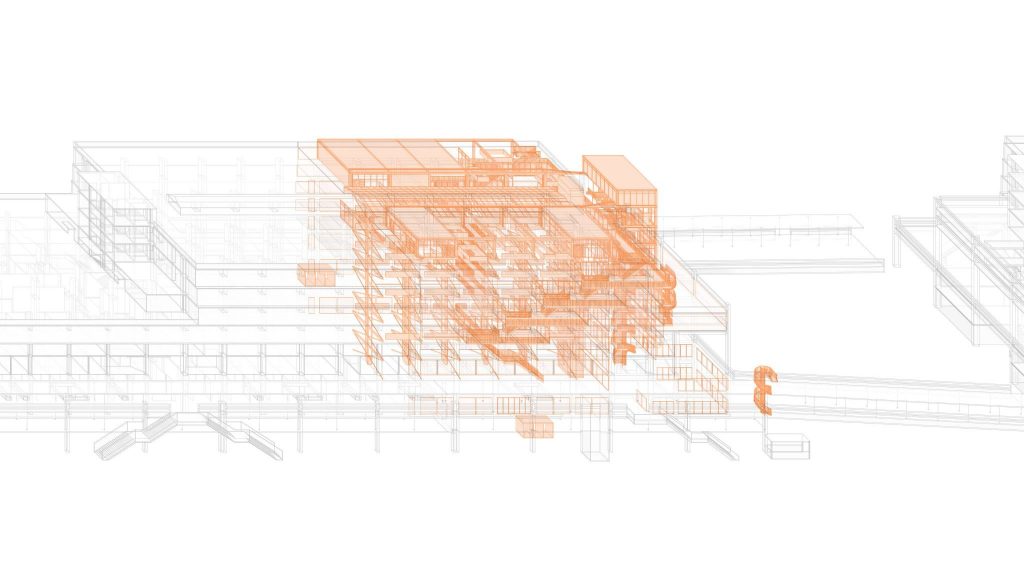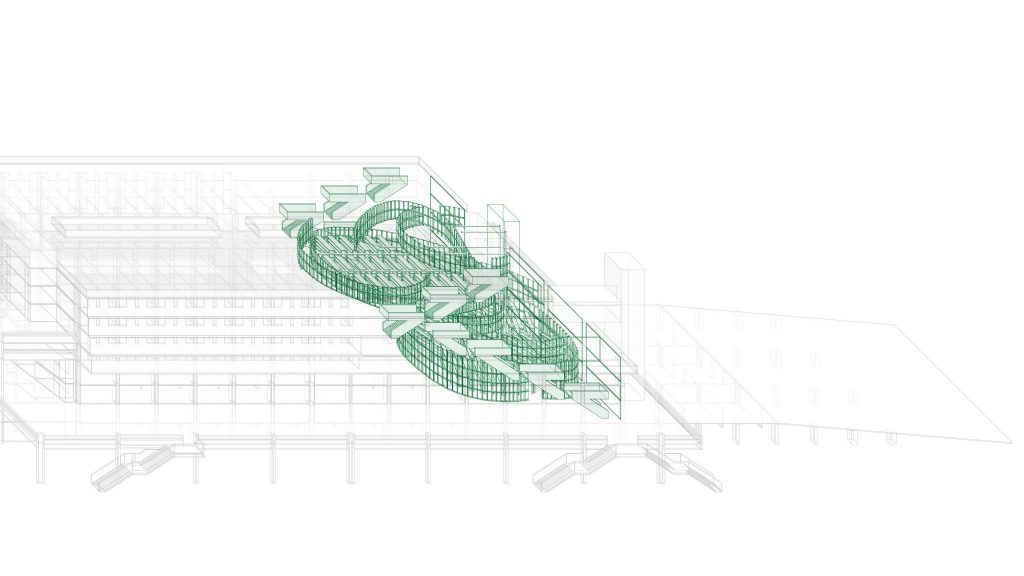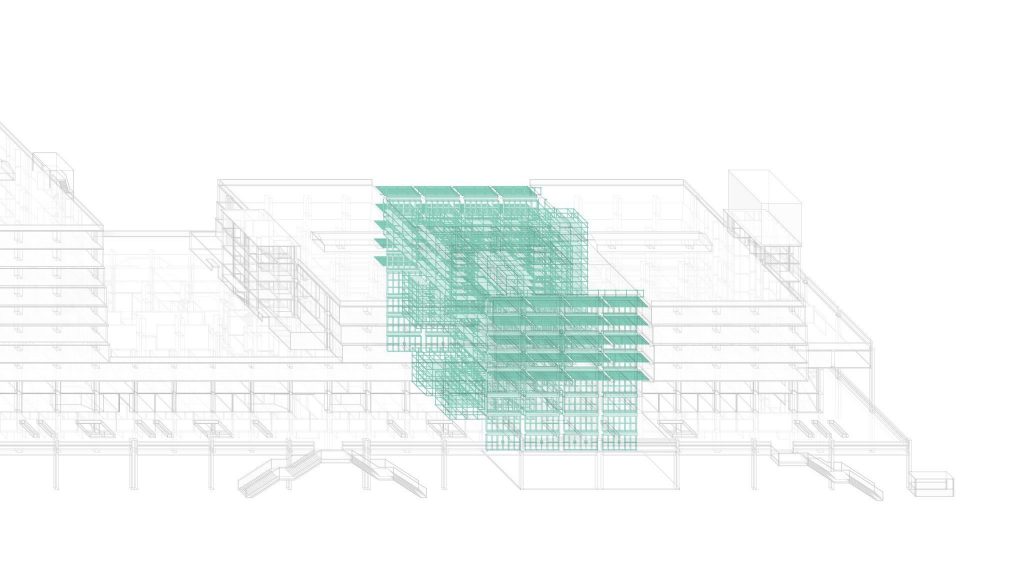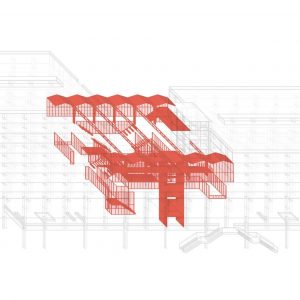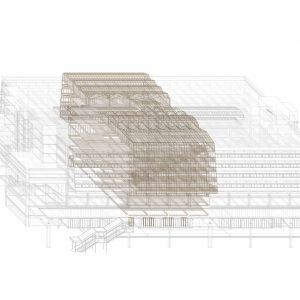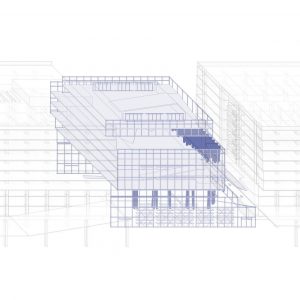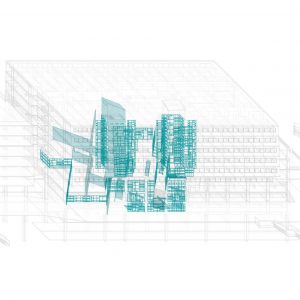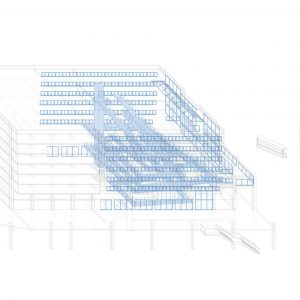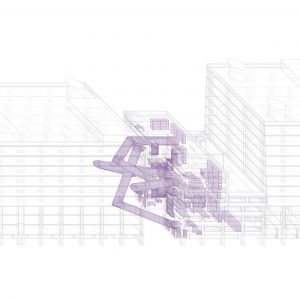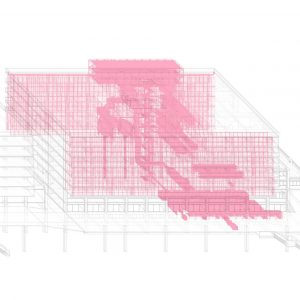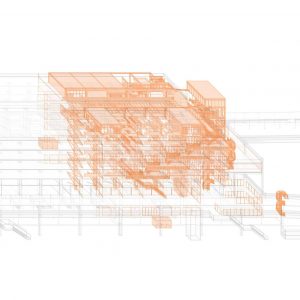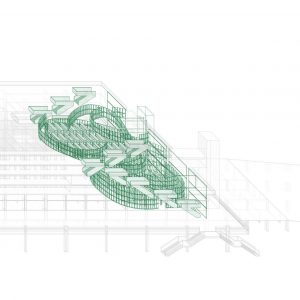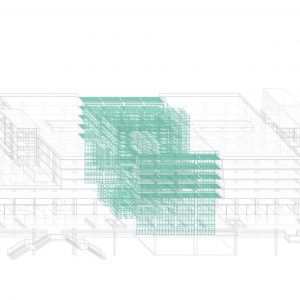Atelier Huang Spring 2022
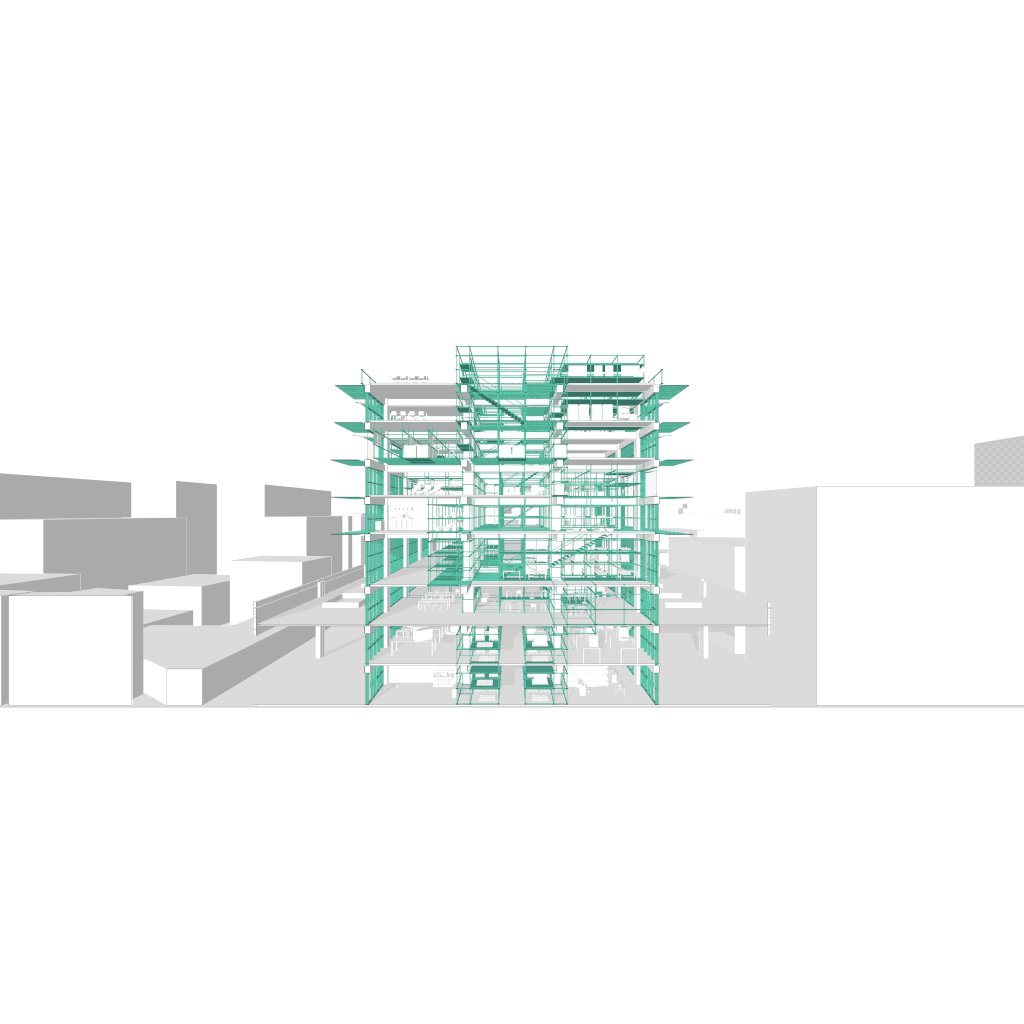

The projects and architectural interventions of this studio focused on Sewoon Makercity, a strangely suspended, brutalist megastructure in Gangbuk, Seoul. We examined the potential of Sewoon as a catalyst for Gangbuk’s transition to a future, net zero circular economy.
Historically, Sewoon has been going through several stages of development. On a narrow strip, cleared by the Imperial Japanese rulers towards the end of World War 2, in order to prevent the spread of fire in the event of a US firebombing, Sewoon was originally designed as a mixed-use commercial and residential complex by the notorious Korean architect Kim Swoo-Geun in the late 1960s. Over time, a bottom-up culture has emerged, with local artisans and entrepreneurs appropriating the megastructure, and alternative markets blossoming, from electronic boutiques to gaming parlors, porn, and pirated media. The uniqueness of Sewoon has been in how it merges manufacturing, distribution, working and living, the young and the old, the official and the illicit. Famously, it was rumored that Sewoon had ”everything to build a tank or a nuclear-powered submarine”. Yet the character of Gangbuk is rapidly changing and the injection of new capital is transforming the city. Rather than succumbing to the temptation of glitzy gentrification, however, Sewoon has resisted and preserved its unique personality, at least, so far.
In this experimental studio, we considered Sewoon as our living laboratory, as an architectural vehicle, to examine how a brutalist architectural relict of the 1960s, can be revitalized and act as a catalyst for transitioning a district (Gangbuk) into an exemplary circular economy. The circular economy promises to change the way society produces goods, how they are procured and delivered, and how waste is collected and re-entered into the value chain. This new economy will inevitably be accompanied by high and low-tech automation, artificial intelligence, and smart infrastructure, including electronic delivery systems and drones. Paradoxically, the new technologies, which threaten to replace their human counterparts, desire proximity to their human customers, to rapidly deliver more highly customized commodities (the last mile problem).
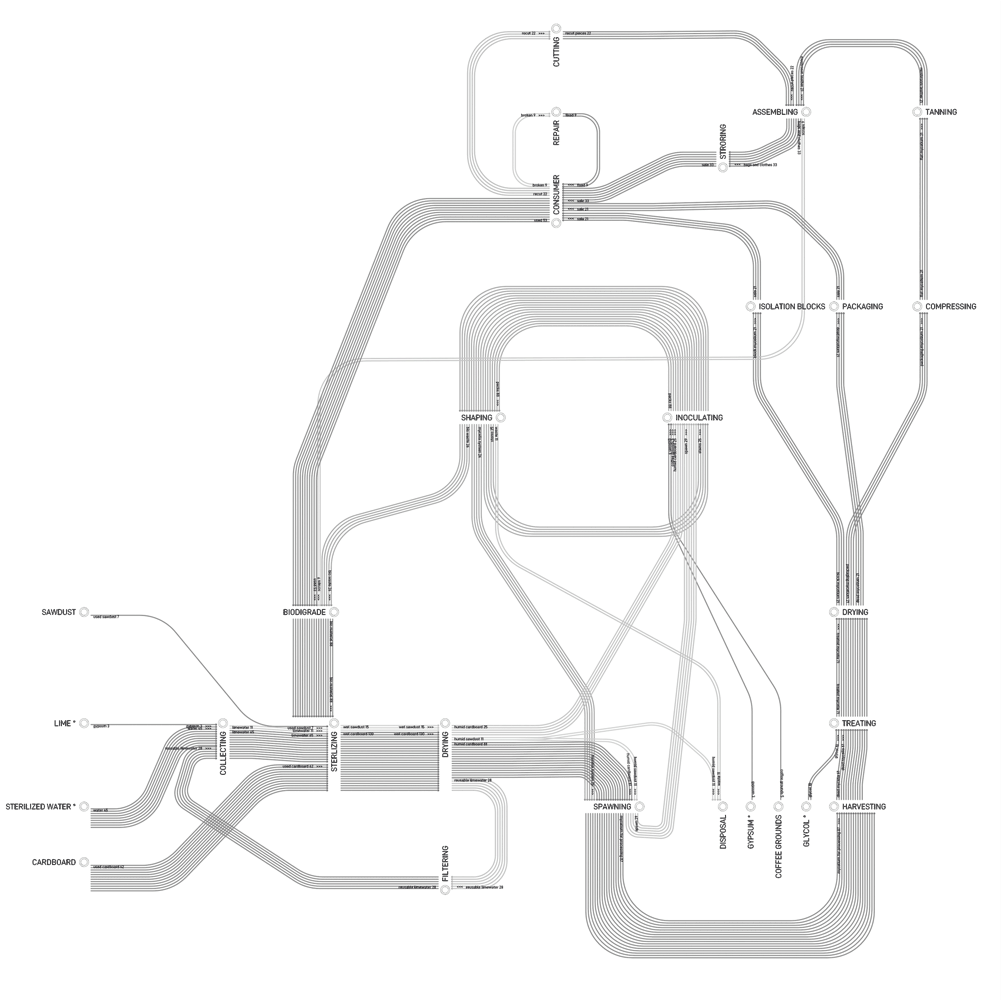
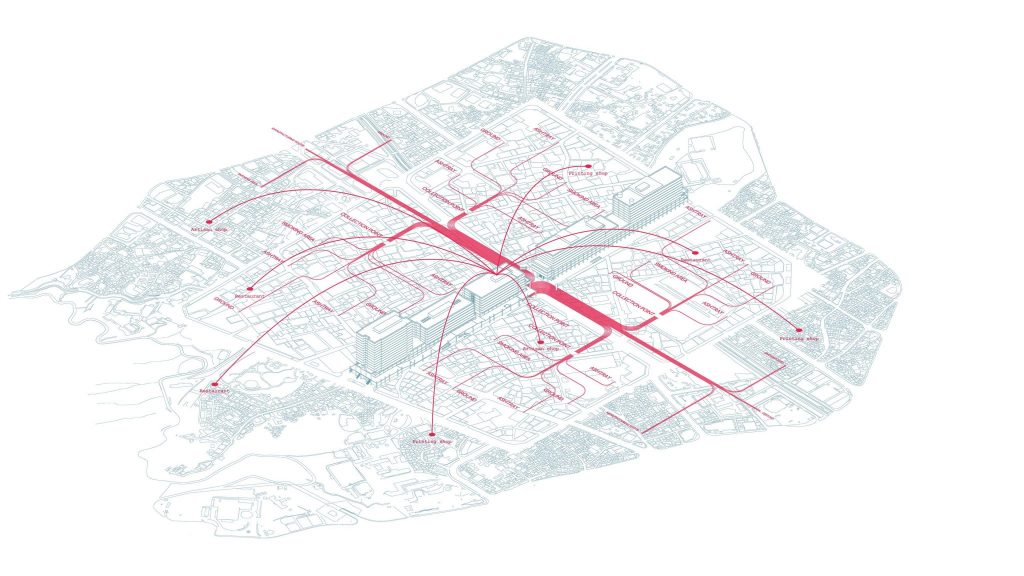
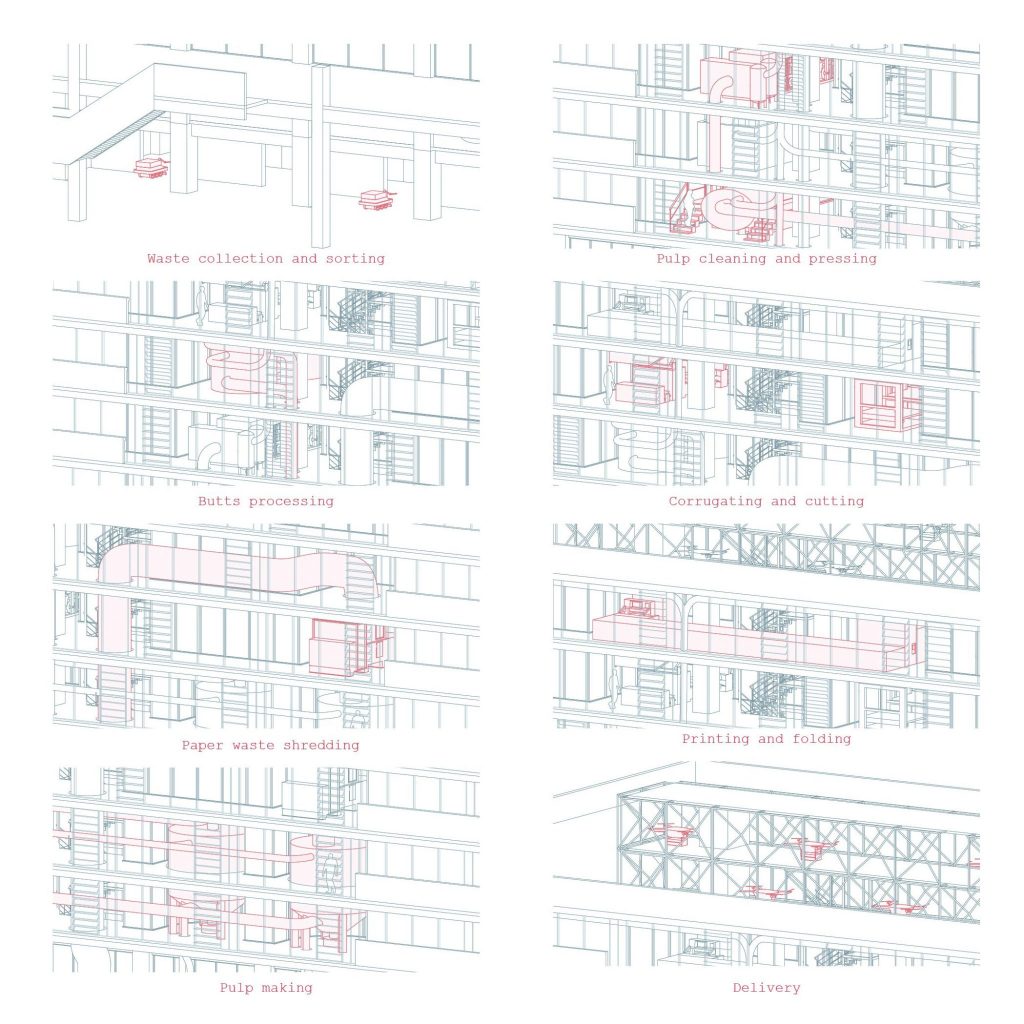
This desire for proximity is leading to the development of circular mass customization and on-demand manufacturing which is cleaner and less impactful environmentally. Can the integration of these technologies in the city provide an impetus for their humanization? The envisaged automation of circular manufacturing in Sewoon, resulting in a sort of cyborgization of architecture, begs several questions: How will we coexist with machines? How will we relate to destinations with unpopulated architecture in the city? In the absence of universal access to technology, how will we promote diversity in thinking, living, and working without succumbing to the creation of smart enclaves? The work of the studio was situated between a larger scale, a system view of the flows of material and goods in the neighborhood (Gangbuk), and a precise and detailed architectural intervention into an existing building (Sewoon). Students focused on a particular material flow of their choice. From plastics, garments, plants, food, and electronics, the purpose is for the combination of the different flows, from waste to product, to form the basis for the spatial and socio-ecological transformation of Gangbuk into Circular Gangbuk.
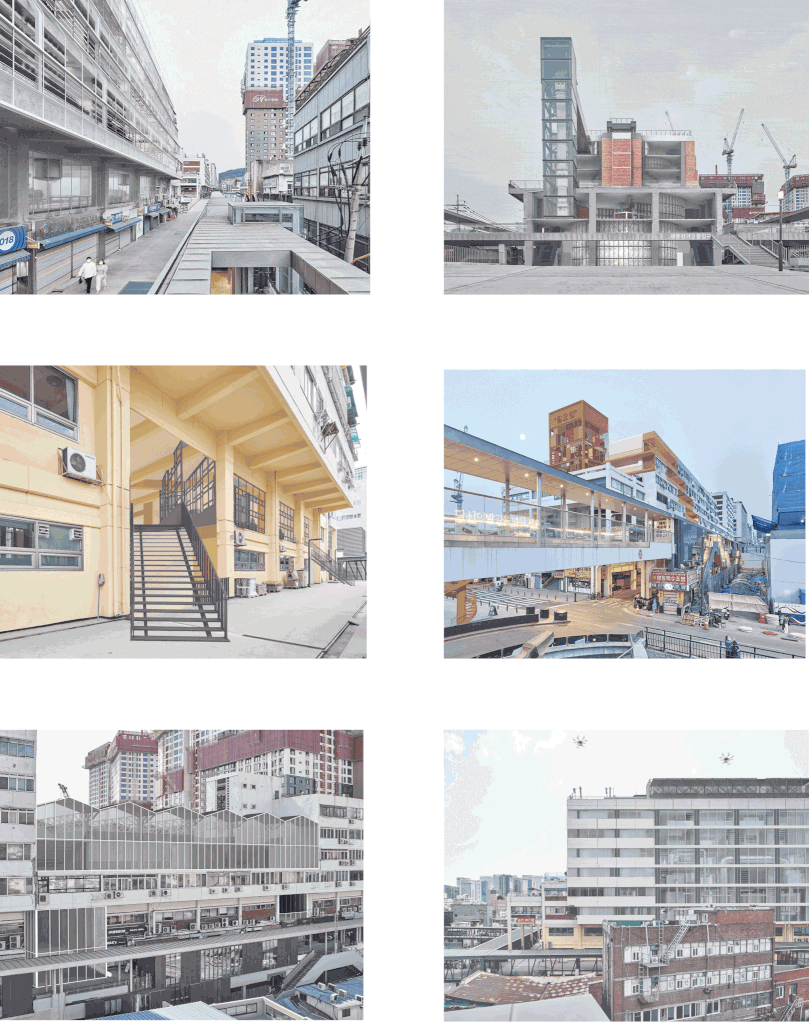
Students | Samuel Barbey, Nathan Benarroch, Laura De Oliveira Guerreiro, Amélie Gaillet, Bryan Marques Soares, Flavio Nogueira Pereira, Frederik Schumacher, Sibylle Vuillemin, Eliott Beaud, Stephen Bopeso, Lucile Charamel, Dimitri Deschenaux, Virginie Grand, Léa Guillotin, Anna Hausel, Maxime Hon, Ilayda Makas, Isabelle Nguyen, Ecenaz Ozkorkut, Auguste Pachoud, Suzana Petrovic, Mikaël Rey, Rahaf Shabaan, Lorenzo Simontacchi, Alexandre Vong, Chloé Tournelle, Alexandros Trivizas, Blagica Vuchkova
Professor | Jeffrey Huang, Professor, Director, MxD Lab
Tutors | Christina Doumpioti, Marcela Delgado Velasco, Christoph Holz, Mikhael Johanes, Frederick Kim, Alexandre Sadeghi
Process blog | https://studiogangbuk.wordpress.com/media-x-design-lab/
